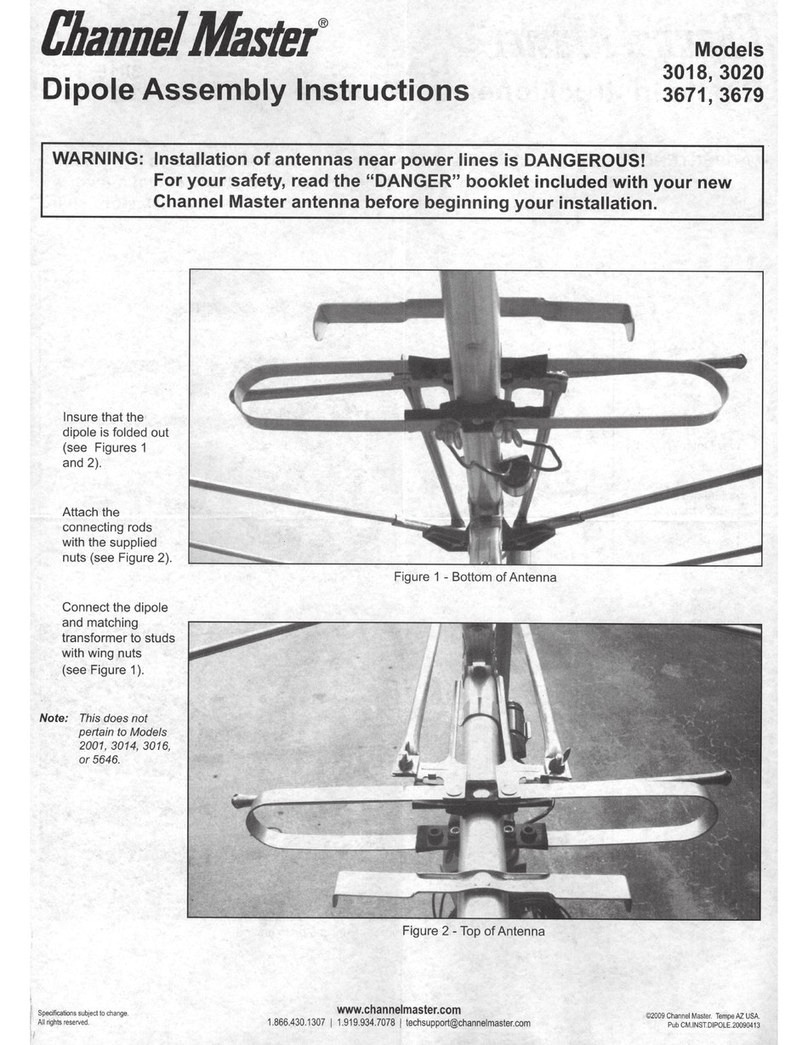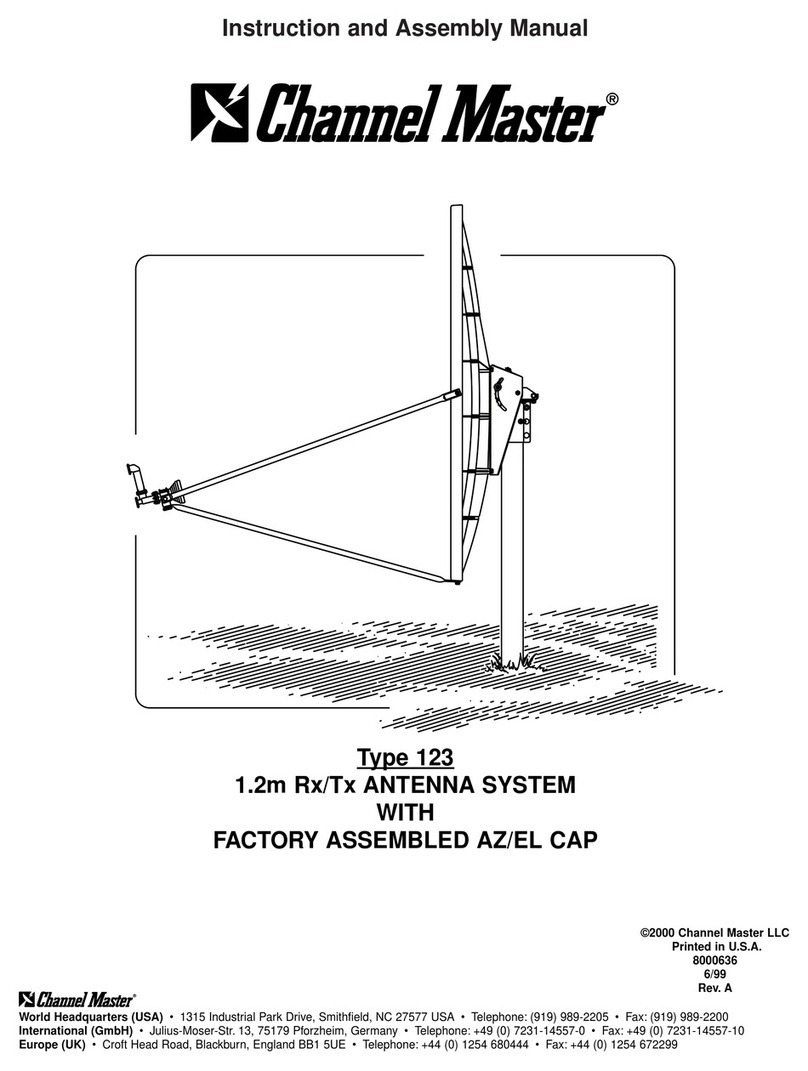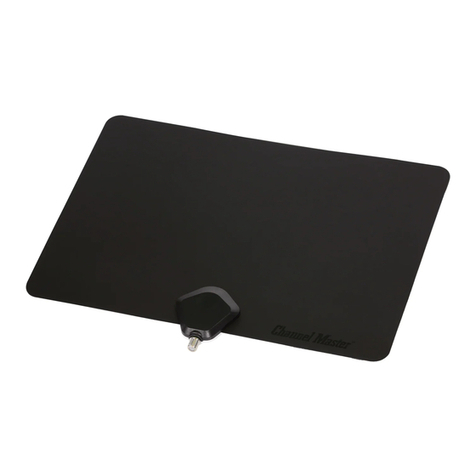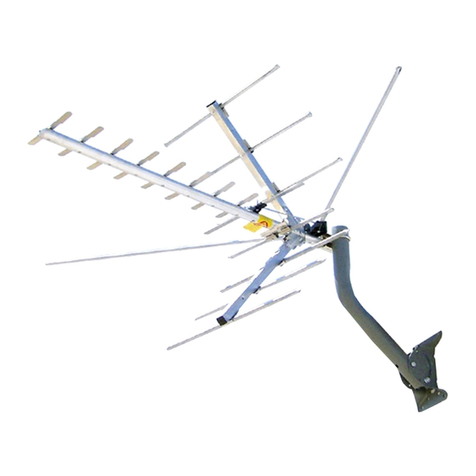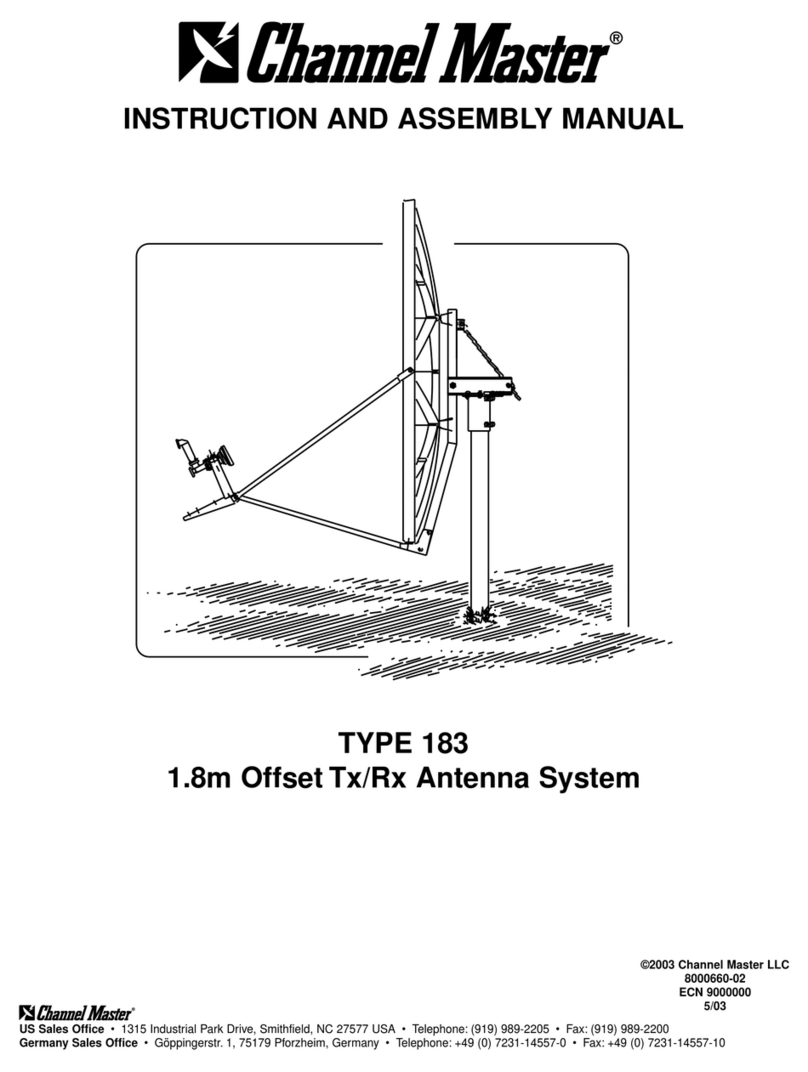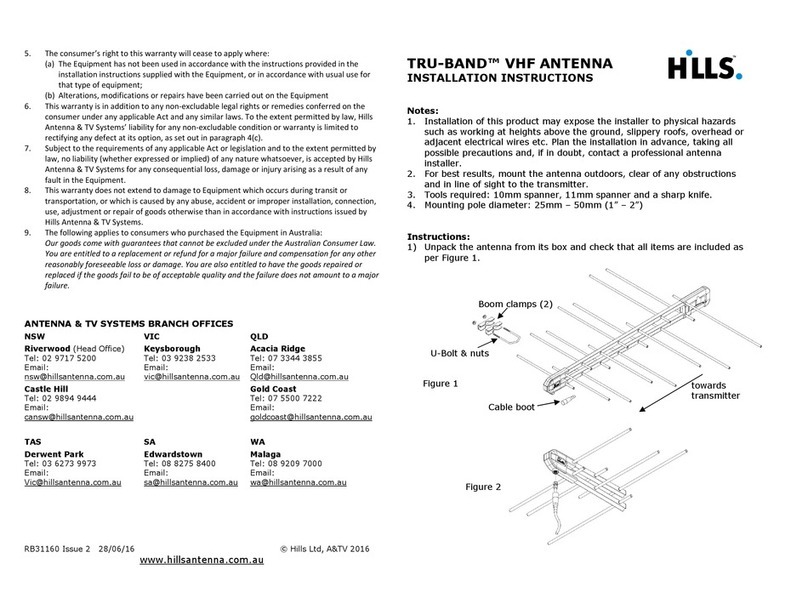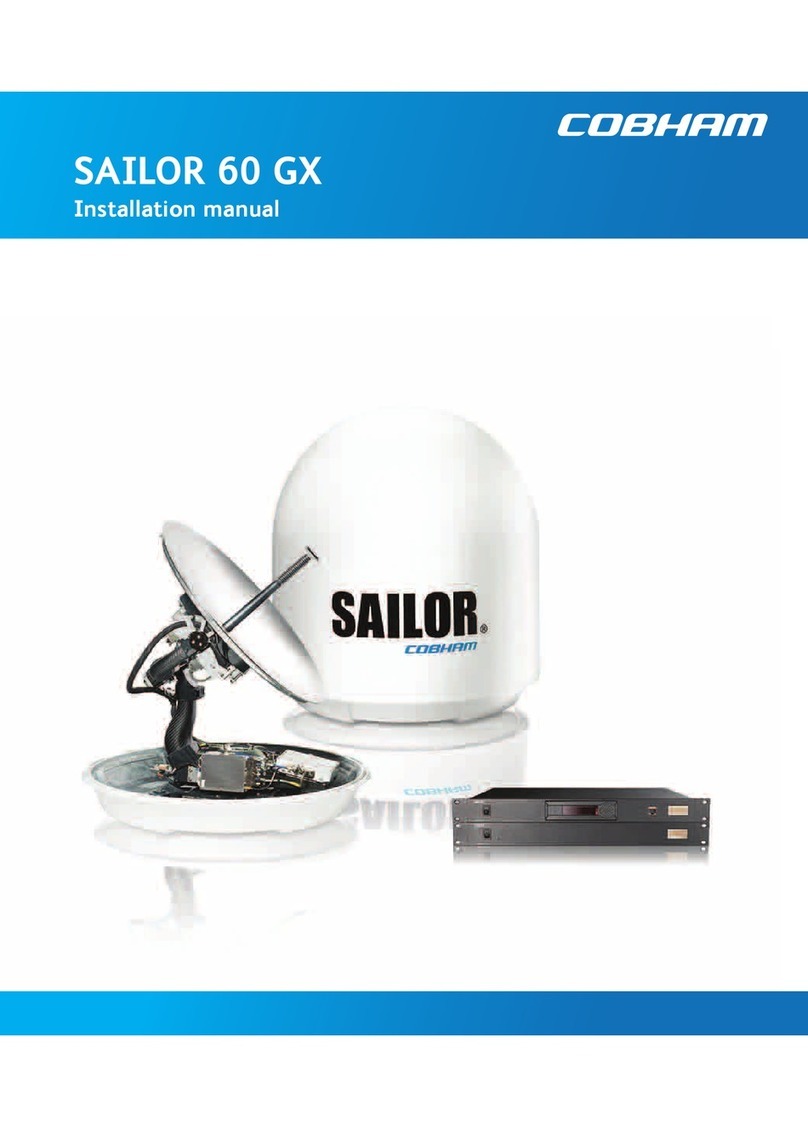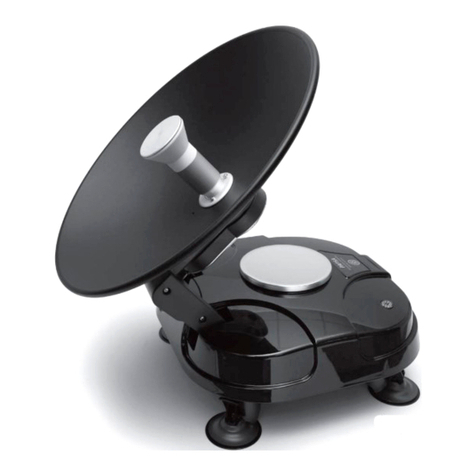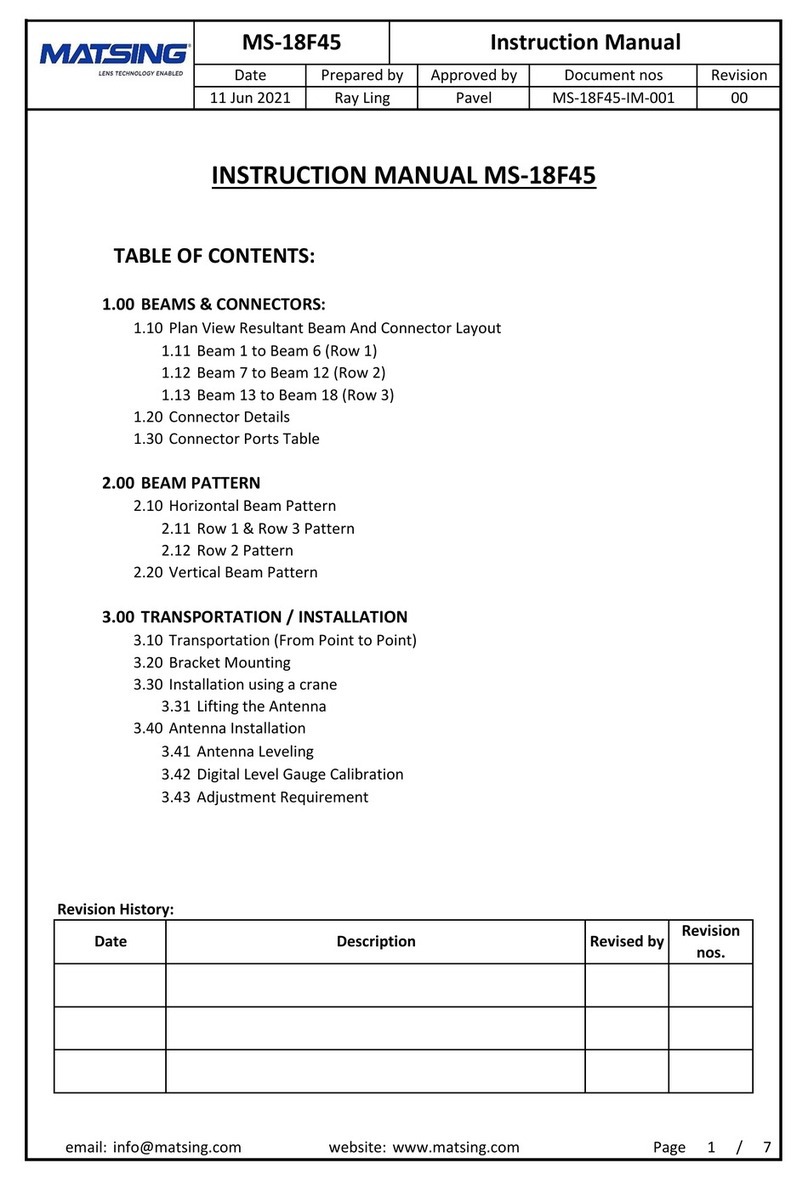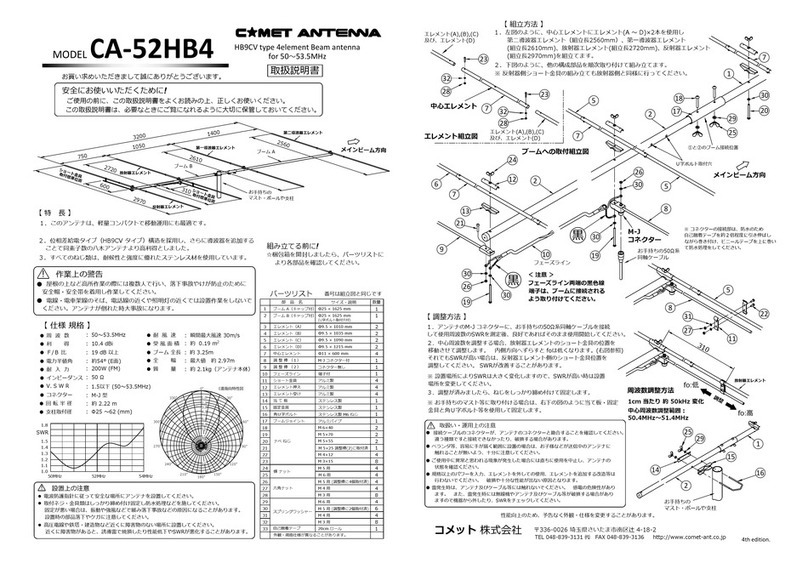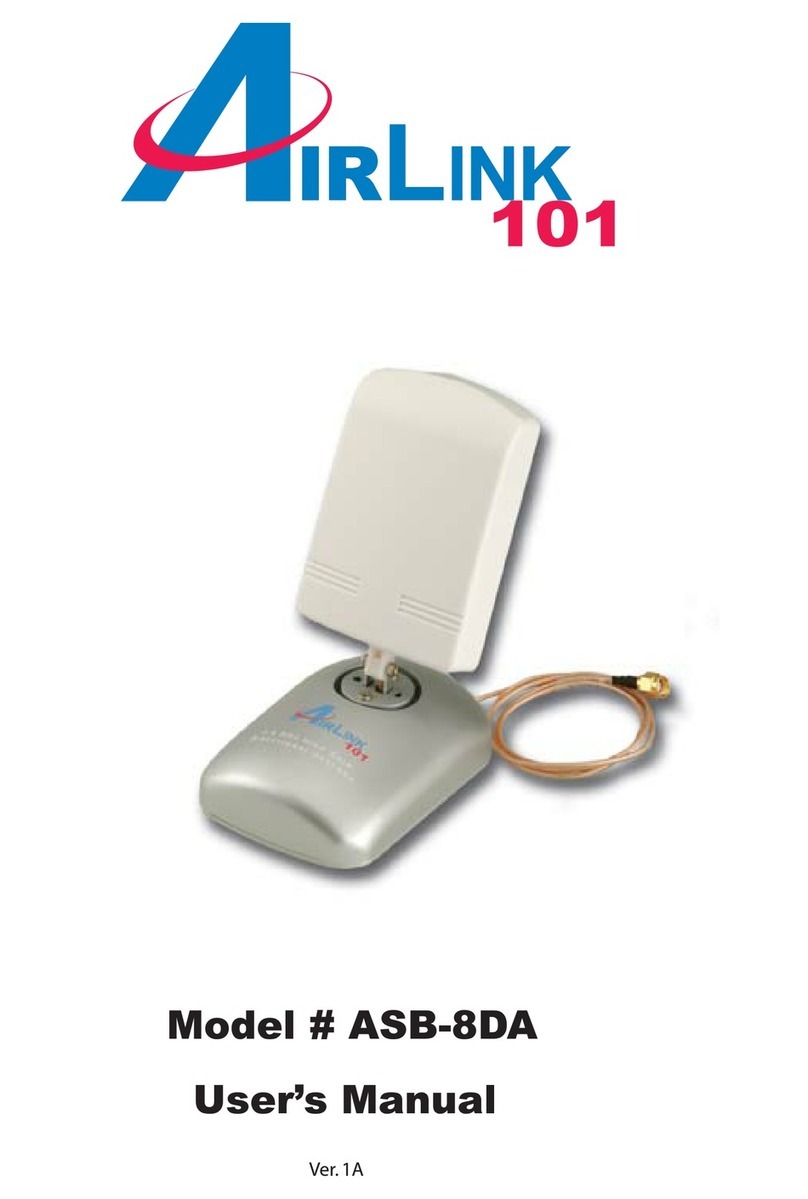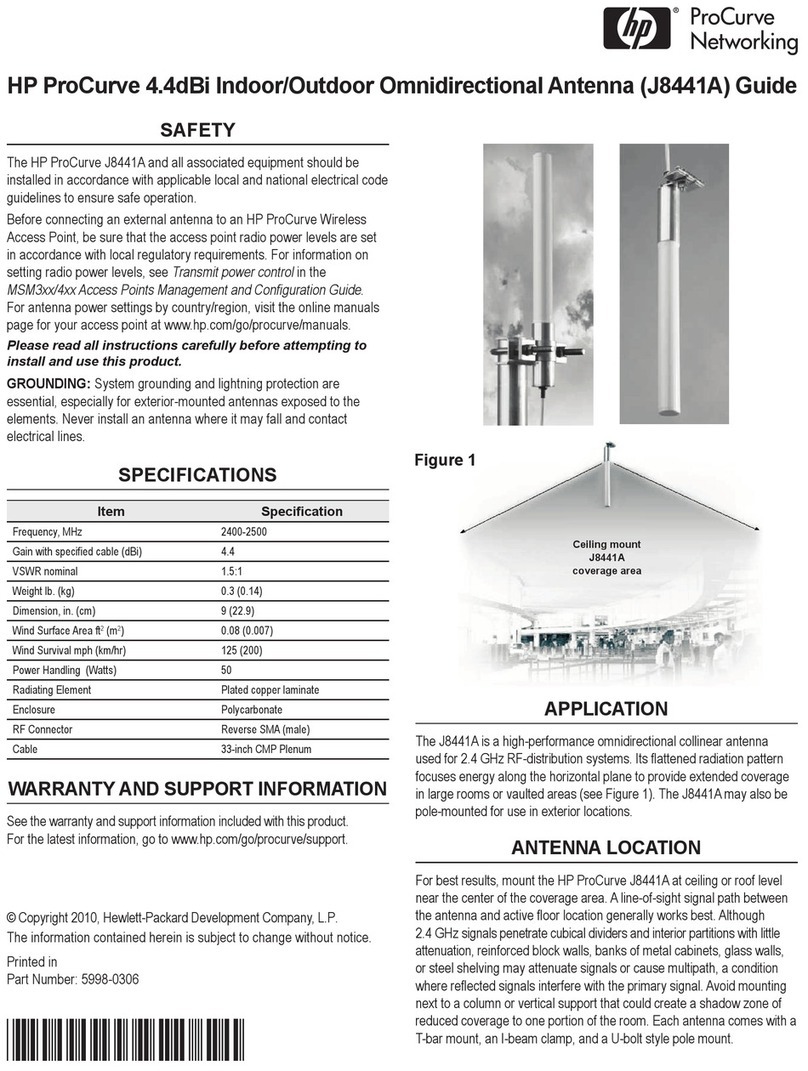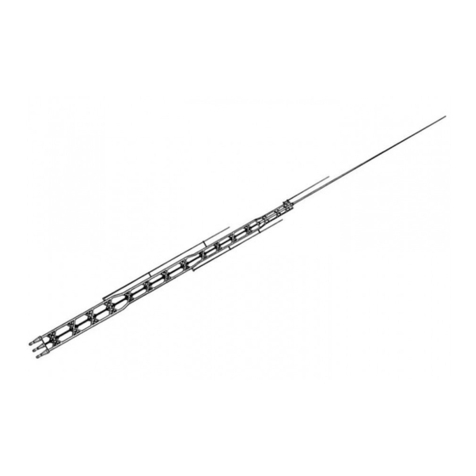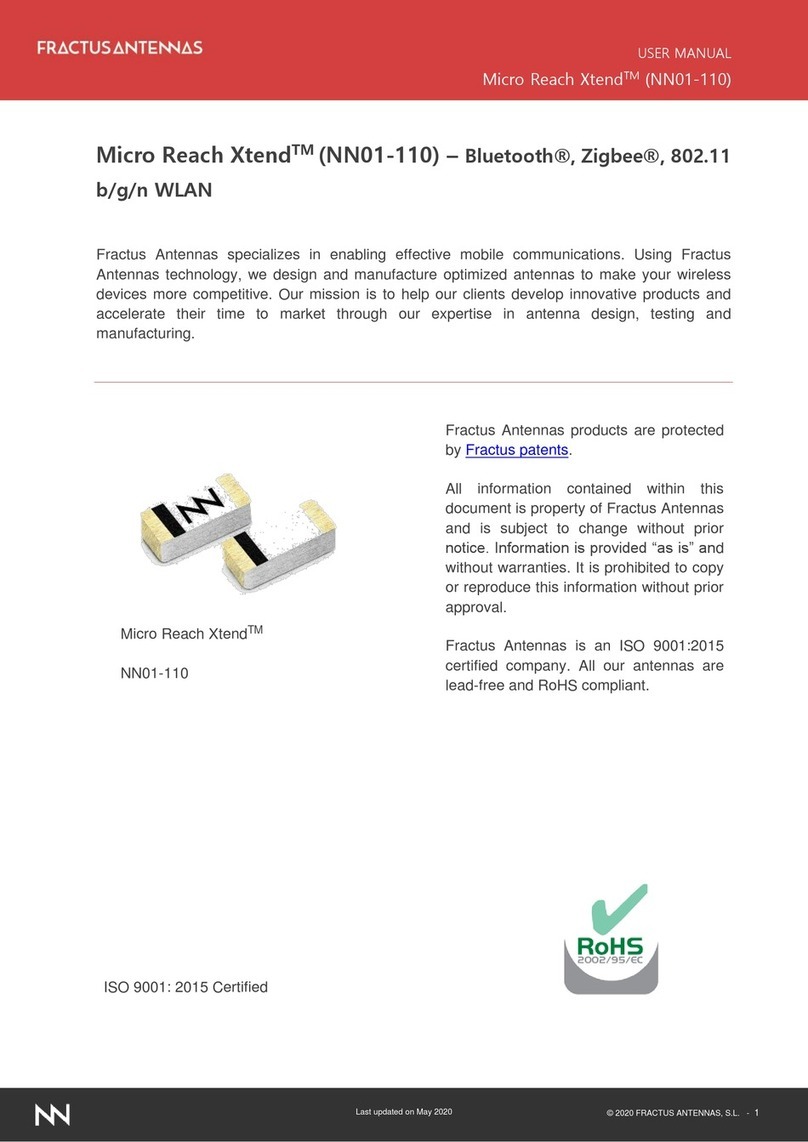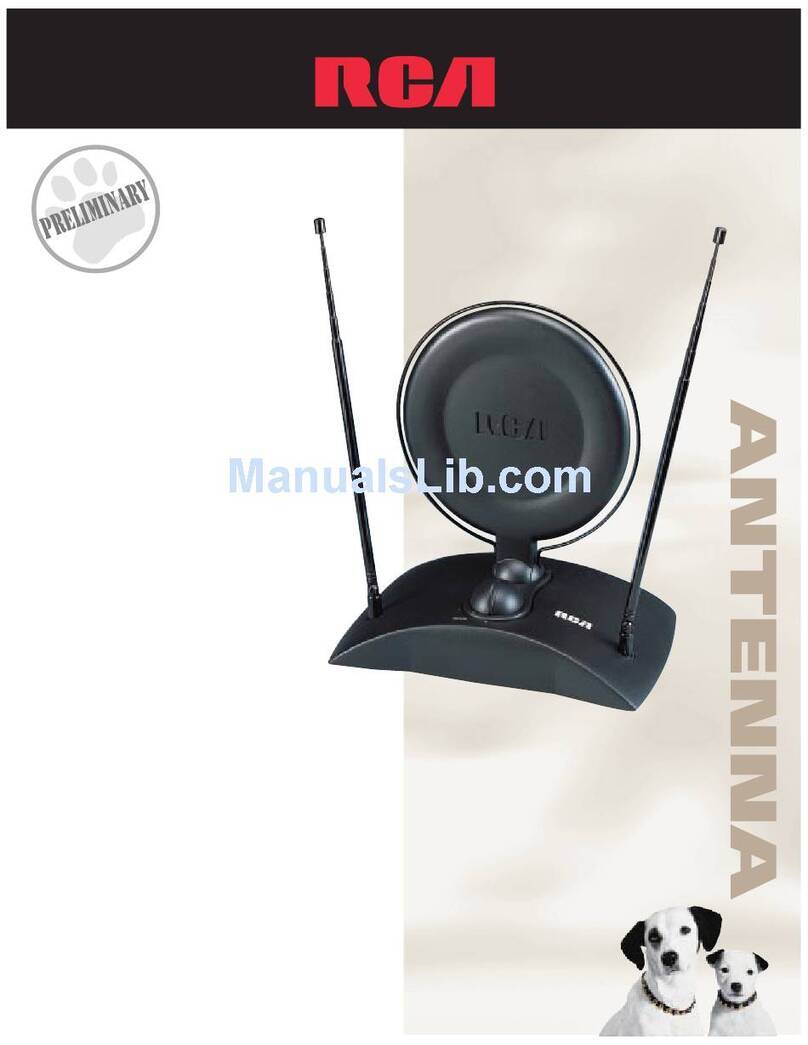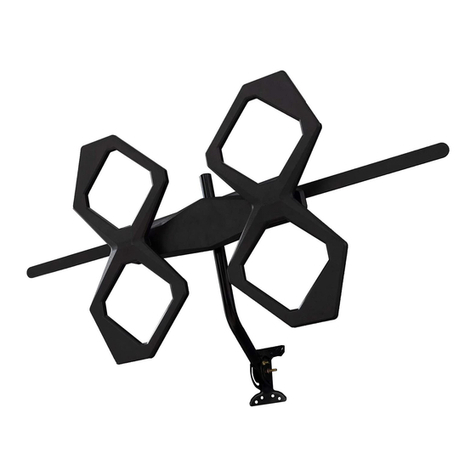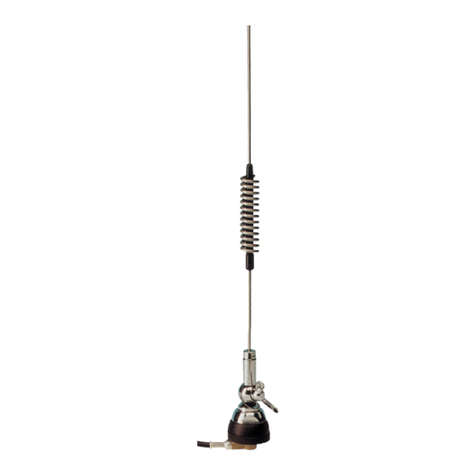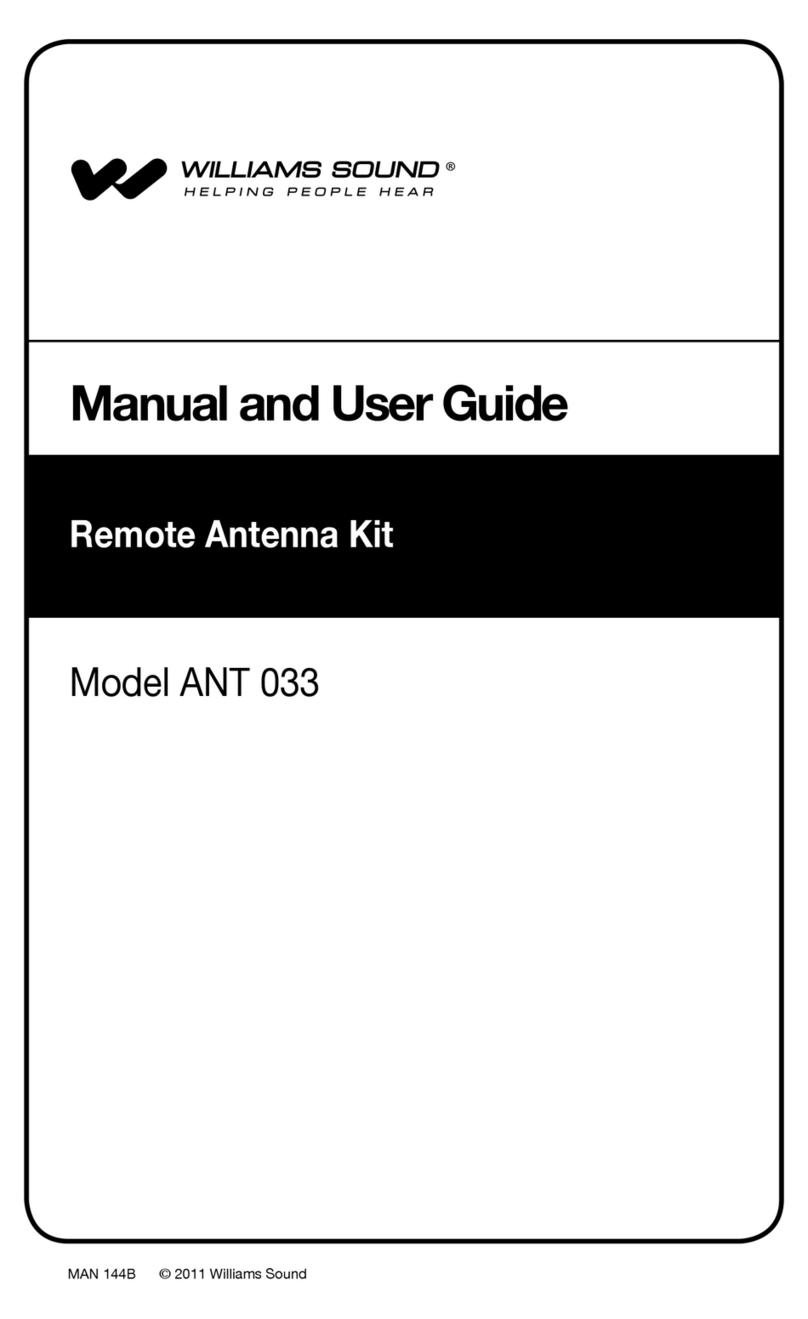To insure that the Tx/Rx Mount and 2.4m SMC Offset Antenna is operating efficiently and at an optimum,
moderate maintenance is required.We recommend conducting a routine Maintenance Inspection every
six months or as needed if unusual circumstances occur, such as severe weather conditions, falling
objects or vandalism.The following checklist is provided for your convenience.
MAINTENANCE INSPECTION CHECKLIST:
1 - FOUNDATION
■Structural Damage
2 -Tx/Rx MOUNT
■All bolts (if any loosening has occurred tighten and torque - refer to Torque Chart page 3)
■Structural Damage
■Corrosion of galvanized steel members
(if necessary, repair with cold zinc-rich galvanizing paint)
3 - 2.4m SMC OFFSET ANTENNA
■Bolts - ⁵⁄₈” round head square neck, securing antenna to mount (Correct torque 20 Ft-lbs/27 N-m)
■Structural Damage
4 - BOTTOM FEED SUPPORTTUBE, SIDE FEED SUPPORT STRUTS AND ODU BRACKET
■All bolts (if loosening has occurred tighten and torque - refer to Torque Chart page 3)
■Corrosion of galvanized steel members (if necessary repair with cold zinc-rich galvanizing paint)
■Structural Damage
5 - FEED ASSEMBLY
■All securing hardware
■Structural Damage
■Feed Horn Weather Cover - Physical Damage (if damaged replace to prevent entry of water)
Upon inspection, make necessary repairs and replace any damaged parts.
For replacement parts, contact:
U.S.A.: VSAT Customer Service, Channel Master England: CHANNEL MASTER
P.O. Box 1416 Premier Business Park
1315 Industrial Park Drive Croft Head Road, Off Philips Road
Smithfield, NC 27577 U.S.A. Whitebirk Industrial Estate
Telephone: (919) 989-2205 Blackburn, Lancashire England BB1 5UE
Fax: (919) 989-2200 (0254) 680444 • Fax (0254) 672299
MAINTENANCE
ITEM PART NO. DESCRIPTION QTY.
1 2020753-03 BACKFRAME ASSEMBLY, GALV 1
2 2070035-01 RD HD SQ NK BLT GALV ⁵⁄₈-13 x 5¹⁄₂”4
3 2509008-02 LOCK WASHER, GALV. ¹⁄₂”20
4 2389002-01 HEX NUT, GALV ¹⁄₂”-13 19
5 3040748-35 2.4M SMC ANTENNATOP HALF (TX QUALITY) 1
- 3040747-35 2.4M SMC ANTENNA BTM HALF (TX QUALITY) 1
6 2382600-01 HEX NUT, SS ¹⁄₄”-20 6
7 2502600-01 FLAT WASHER, SS ¹⁄₄”2
8 2602600-01 LOCK WASHER, SS ¹⁄₄”4
10 2020773-02 BOTTOM FEED SUPPORT TUBE 1
11 2509009-01 EXTERNAL TOOTH LOCK WASHER ¹⁄₂”4
12 2075088-01 HEX BOLT, GALV ¹⁄₂”x5¹⁄₂”2
13 2010301-02 L.H. CHANNEL, CAP MT., GALV 1
14 2389005-01 HEX NUT, GALV ⁷⁄₈”-9 3
15 2509008-04 LOCK WASHER ⁷⁄₈”1
16 2070020-02 RD HD SQ NK BLT GALV ¹⁄₂”x1¹⁄₂” GD 5 1
PARTS AND HARDWARE
Tx MOUNT AND BOTTOM FEED SUPPORT TUBE
ITEM PART NO. DESCRIPTION QTY.
17 2075209-01 HEX BOLT, GALV ¹⁄₂”x1¹⁄₄” GD 5 10
18 2020755-04 YOKE CAP ASSEMBLY, GALV 1
19 2020754-02 TOP PLATEYOKE ASSY, GALV 1
24 2070039-01 HEX BOLT ⁷⁄₈-9” x 6” 1
25 2020555-04 ELEVATION ADJUSTMENT SCREW 1
26 2010453-03 TRUNNION, GALV 1
27 2020774-01 SIDE STRUT 2
28 2072612-01 HEX BOLT, SS ¹⁄₄”x³⁄₄”4
40 2075202-06 AZIMUTH ADJUSTMENT SCREW 1
41 2509008-03 LOCK WSHER, GALV ⁵⁄₈”4
42 2389003-01 HEX NUT, GALV ⁵⁄₈” -13 1
43 2070035-02 RD HD SQ NK BLT GALV ⁵⁄₈”x1¹⁄₂”1
44 2075024-01 HEX BOLT, GALV ¹⁄₂”x1¹⁄₂”12
45 2509014-01 FLAT WASHER, SS ¹⁄₂”24
46 2060033-01 HEX BOLT, SS, ¹⁄₄”x1¹⁄₂” FULL THREAD 1
FIGURE - 12.0













